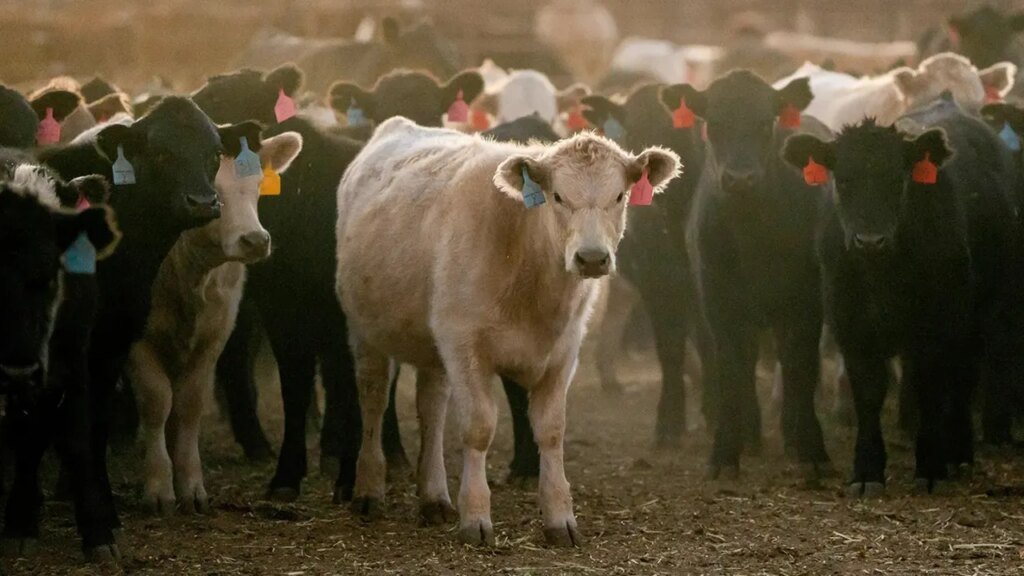
Beef cattle in corrals at a ranch in Sonoita, Arizona, on Tuesday, Nov. 11, 2025. (Getty Images)
America’s beef bills are set to keep climbing, according to Omaha Steaks President and CEO Nate Rempe, who cautioned that the nation’s shrinking cattle supply and record demand are driving a “$10-a-pound reality” that could stretch family budgets for years.
“Look, domestically, we need to get our arms around it. Last time we got together, we talked about how the herd is at a 70-year low, demand is at an all-time high and the net result is prices are through the roof,” Rempe told “Mornings with Maria” on Friday.
“We are headed for what I’m calling … the $10-a-pound reality. By [the] third quarter of ’26, families are gonna see $10 a pound [for] ground beef in the grocery store. So we’re in for a bit of a haul here,” he continued. “I don’t believe we’ll see price[s] come down in any meaningful way until sometime in 2027.”
“And it’s gonna be tough on families. I mean, that’s gonna be quite a shock.”
‘MY WHOLE LIFE WAS A LIE’: FORMER VEGAN CHEF SINKS HER TEETH INTO CATTLE RANCHING
Rempe’s comments come on the same day that the White House announced several trade deals that could lead to tariff reductions on certain goods, like beef exports from Argentina. The framework for the deal with Argentina also includes lower tariffs on Argentine beef imports, but does not increase the United States’ import quota.
One week ago, President Donald Trump also announced that he has directed the Department of Justice (DOJ) to launch an investigation into major meatpacking companies, accusing them of driving up beef prices through “illicit collusion, price fixing and price manipulation.”
Beef prices are at a record high after a drought left cattle inventory at the lowest level in 70 years. According to the latest consumer price index data from the U.S. Bureau of Labor Statistics, beef and veal prices rose 14.7% year-over-year in September, while uncooked ground beef was up 12.9%.
“There’s this concept in the industry called ‘heifer retention.’ And it’s a decision that the rancher and the feedlot operator make to hold back the female animal, to build the herd as opposed to send[ing] it to market,” Rempe explained. “Now, that’s a double-edged sword. We’ve started to see good signals that that’s happening, but that means that the supply is gonna continue to shrink as fewer cattle are going to market.”
“There’s this concept in the industry called ‘heifer retention.’ And it’s a decision that the rancher and the feedlot operator make to hold back the female animal, to build the herd as opposed to send[ing] it to market,” Rempe explained. “Now, that’s a double-edged sword. We’ve started to see good signals that that’s happening, but that means that the supply is gonna continue to shrink as fewer cattle are going to market.”
“We’re going to flex our muscle at Omaha Steaks, and we’re going [to] hold our primary gift packages at the same prices that we’ve had the last 48 months. And we’re gonna do that by looking internally, driving efficiencies into our business, leveraging our vertical integration,” he said.
“So I think America needs to really look to companies that have interesting competitive advantages … I hope that we can continue to drive efficiency and productivity … But, you know, I have to ultimately buy beef to manufacture my product. So if that price hits an unsustainable level, I’m subject to the same challenges.”
FOX Business’ Rachel Wolf and Sophia Compton contributed to this report.
LINK: Get updates and more at foxbusiness.com.







